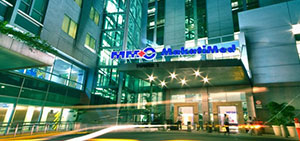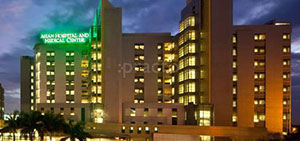All About Stretch Marks
Rebecca B. Singson, MD, FPOGS, FPSCPC
WHAT ARE STRETCH MARKS?
Stretch marks, also known as stria atrophica or striae distensae, is a common skin condition that has no serious medical consequences yet, can cause a major cosmetic concern to people to have it. It may appear in the shoulders of body builders, in the buttocks of adolescents undergoing their growth spurt, and in the arms, breasts, buttocks and thigh of individuals who are overweight. Seventy percent (70%) of adolescent females, and 40% of adolescent males, especially those who participate in sports, have stretch marks. If it occurs during pregnancy, it is called striae gravidarum. It is found in 90% of pregnant white women but is less common among Asian and black women. (2) Striae generally develop late in the 2nd trimester and the areas most frequently affected are the breasts and abdomen.
WHAT CAUSES STRETCH MARKS?
The cause of stretch marks is still unclear, although genetic predisposition, hormones and weight gain during pregnancy each appear to have a role in the etiology. Prolonged use of oral or topical corticosteroids or Cushing syndrome (increased adrenal cortical activity) also causes striae. They represent linear dermal scars accompanied by atrophy of the epidermal layer of the skin.
The skin has three different layers. The top layer is known as the epidermis, the middle, elastic layer is called the dermis, and the deepest layer is called the subcutaneous layer. Stretch marks actually occur in the elastic dermis layer.
These are caused by tearing in the skin and its underlying connective tissue as a result of direct trauma or stretching due to the enlargement of muscle or adipose (fat) tissue. As underlying tissue enlarges due to sudden and drastic weight gain, the dermis is stretched too far too quickly and its collagen fibers break, thus, leaving some microscopic bleeding and inflammation that become the dreaded stretch marks. If you look under the microscope, it will reveal that elastic fibers are absent in the area of the defect and are curled and clumped at the sides. At first, stretch marks appear slightly raised and pink, reddish brown, or dark brown lines that then turn purple or violet. Over time, these lines will fade in color and become almost silvery in comparison to your normal skin tone.
HOW CAN I PREVENT STRETCH MARKS?
A healthy diet for prevention of stretch marks is one that incorporates all the essential amino acids and essential fatty acids, enough Vitamins C and E as well as the minerals zinc and silica have been known to help form collagen and aid in tissue regeneration.
The market abounds with products for stretch mark prevention. One such product is The Stretch Mark PreventionTM cream which contains 100% natural ingredients such as squalene oil, vitamin E, vitamin A, vitamin D3 as well as aloe vera and grapefruit seed extracts. Together they are designed to blend to increase the elasticity of the skin and stimulate the production and regeneration of new skin cells. Shea butter and olive oil have been age old preventive treatments for stretch marks. PhytoelastinTM, from France, is one of the few products with scientific studies to back up its claim of preventing stretch marks. Cochrane analysis shows that applying products on the skin does work to prevent stretch marks, although it is not clear whether it is the product that causes the prevention or the act of massaging the skin, thus increasing the circulation that does the trick.
IF I ALREADY HAVE STRETCH MARKS, HOW CAN I GET RID OF IT?
PhytolastinTM has 2 product lines for prevention of stretch marks during pregnancy and another product after delivery to help fade stretch marks. Its proprietary formula changes the composition of your skin deep, deep in the dermal level where new skin cells are made.
StriPeptin™ , is another product that claims to stimulate cell production around the damaged areas, giving a noticeable improvement in your stretch marks. They claim that 93% of users in their clinical study could see a clear, measurable difference in the appearance of their marks after just 8 weeks.
Retinoids — Topical retinoids have been shown to be beneficial in remodeling hypertrophic scars and in improving the clinical appearance, including improvement of the surface texture, fine and coarse wrinkling, skin color, and laxity, of photoaged skin after 3-6 months of therapy.Drug Name
Tretinoin (Avita, Retin-A) — Trans-retinoic acid is a derivative of vitamin A (retinol), effectively used to treat acne vulgaris and other disorders of keratinization for the past 3 decades. It exhibits a certain degree of vitamin A growth-promoting activity and in epithelial cell promotes collagen synthesis.. Topical application significantly improves clinical appearance of early, active stretch marks. Patients are instructed to gradually increase amount of tretinoin until mild erythema and exfoliation develops; may also apply a bland emollient if excessive irritation develops. It is recommended to apply 0.05% or 0.1% cream on affected areas once or twice a day
Bio Oil is a recent natural product, available in local drugstores made of Vitamin A, Vitamin E, Calendula Oil, Lavender Oil, Rosemary Oil and Chamomile Oil. It has been found to effectively reduce stretch marks (quite safe to use in pregnancy because of the natural oils), prevent the appearance of stretch marks, as well as improve the appearance of scars because it helps enhances the production of collagen.
Early red stretch marks can be improved with the pulsed dye laser. However, older stretch marks show both whitening of the skin (hypopigmentation) and thinning of the skin (atrophy). Although there is no treatment for the atrophy, there are UV lasers developed for the treatment of the white skin associated with stretch marks. The laser emits short powerful pulses of ultraviolet light that stimulate the pigment-producing cells of the skin (melanocytes) to make melanin. The melanin results in a darkening of the white stretch marks and brings the stretch mark skin closer to the natural color of the surrounding skin. By decreasing the whiteness of the stretch marks and making the skin color more normal, the stretch marks become much less noticeable. Treatments are effective for all skin types and ages. Partial pigmentation of stretch marks starts after 3-6 treatments. Treatments are usually delivered twice a week for 4-6 weeks with an 80 percent response rate which varies among patients.
Disclosure
INTRODUCTION Section 2 of 10
Author Information Introduction Clinical Differentials Workup Treatment Medication Follow-up Pictures Bibliography
Background: Striae distensae, a common skin condition, do not cause any significant medical problem; however, striae can be of significant distress to those affected. They represent linear dermal scars accompanied by epidermal atrophy.
Pathophysiology: Striae distensae affect skin that is subjected to continuous and progressive stretching; increased stress is placed on the connective tissue due to increased size of the various parts of the body. It occurs on the abdomen and the breasts of pregnant women, on the shoulders of body builders, in adolescents undergoing their growth spurt, and in individuals who are overweight.
Skin distension apparently leads to excessive mast cell degranulation with subsequent damage of collagen and elastin. Prolonged use of oral or topical corticosteroids or Cushing syndrome (increased adrenal cortical activity) leads to the development of striae. Genetic factors could certainly play a role, although this is not fully understood.
Frequency:
In the US: Approximately 90% of pregnant women, 70% of adolescent females, and 40% of adolescent males (many of whom participate in sports) have stretch marks.
Internationally: International figures may reasonably mirror the numbers in the United States.
Mortality/Morbidity: Striae distensae are usually a cosmetic problem; however, if extensive, they may tear and ulcerate when an accident or excessive stretching occurs.
Race: Stretch marks affect persons of all races.
Sex: Striae affect women more commonly than men.
Age: Stretch marks affect adolescents, pregnant women, and patients with excessive adrenal cortical activity.
CLINICAL Section 3 of 10
Author Information Introduction Clinical Differentials Workup Treatment Medication Follow-up Pictures Bibliography
Physical: Early striae present as flattened, thinned skin with a pink hue that may occasionally be pruritic. Gradually, they enlarge in length and width and become reddish purple in appearance (striae rubra). The surface of striae may be finely wrinkled. Mature striae are white, depressed, irregularly shaped bands, with their long axis parallel to the lines of skin tension. They are generally several centimeters long and 1-10 mm wide. Gradually, some striae may fade and become inconspicuous. The natural evolution of stretch marks is similar to that of scar formation or a healing wound.
In pregnancy, striae usually affect the abdomen and the breasts.
The most common sites for striae on adolescents are the outer aspects of the thighs and the lumbosacral region in boys and the thighs, the buttocks, and the breasts in girls. Considerable variation occurs, and other sites, including the outer aspects of the upper arms, are occasionally affected.
Striae induced by prolonged systemic steroid use are usually larger and wider than other phenotypes of striae, and they involve widespread areas, occasionally including the face.
Striae secondary to topical steroid use are usually related to enhanced potency of the steroids when using occlusive plastic wraps. They usually affect the flexures and may become less visible if the offending treatment is withheld early enough.
Causes:
The factors that lead to the development of striae are poorly understood. No general consensus exists as to what causes striae. One suggestion is that they develop as a result of stress rupture of the connective tissue framework. It has also been suggested that they develop more easily in skin that has a high proportion of rigid cross-linked collagen, as occurs in early adult life. This is evident in striae due to pregnancy, lactation, weight lifting, and other stressful activities. Increased adrenal cortical activity has been implicated in the formation of striae, as in the case of Cushing syndrome. Additionally, the cellular and extracellular matrix alterations that mediate the clinical phenotype of stretch marks remain poorly understood.
DIFFERENTIALS Section 4 of 10
Author Information Introduction Clinical Differentials Workup Treatment Medication Follow-up Pictures Bibliography
Other Problems to be Considered:
Although the diagnosis of striae is usually straightforward, the rare possibility of Cushing syndrome must be entertained. In the latter, striae are characterized by their inordinate breadth, depth, and intense color.
In linear focal elastosis (elastotic striae), asymptomatic, yellow linear bands arrange themselves horizontally over the lower back. These lesions may resemble striae distensae, but they are palpable rather than depressed and yellow rather than purplish or white.
Quick Find
Author Information
Introduction
Clinical
Differentials
Workup
Treatment
Medication
Follow-up
Pictures
Bibliography
Click for related images.
Related Articles
Continuing Education
CME available for this topic. Click here to take this CME.
Patient Education
Click here for patient education.
WORKUP Section 5 of 10
Author Information Introduction Clinical Differentials Workup Treatment Medication Follow-up Pictures Bibliography
Histologic Findings: In the early stages, inflammatory changes may predominate; edema is present in the dermis along with perivascular lymphocyte cuffing.
In the later stages, the epidermis becomes thin and flattened with loss of the rete ridges. The dermis has thin, densely packed collagen bundles arranged in a parallel array horizontal to the epidermis at the level of the papillary dermis. Elastic stains show breakage and retraction of the elastic fibers in the reticular dermis. The broken elastic fibers curl at the sides of the striae to form a distinctive pattern.
Scanning electron microscopy shows extensive tangles of fine, curled elastic fibers with a random arrangement. This arrangement is in contrast to normal skin, which has thick, elastic fibers with a regular distribution. When viewed by transmission electron microscopy, the ultrastructure of elastic and collagen fibers in striae is similar to that of healthy skin.
TREATMENT Section 6 of 10
Author Information Introduction Clinical Differentials Workup Treatment Medication Follow-up Pictures Bibliography
Medical Care:
Adolescents with striae can expect some improvement in their striae with time.
Topical application of tretinoin can significantly improve the clinical appearance of early striae distensae.
Surgical Care: The authors have had good success using low concentrations (15-20%) of trichloroacetic acid (TCA) and performing repetitive papillary dermis-level chemexfoliation. The peels can be repeated at monthly intervals. Significant improvement in regard to skin texture, firmness, and color can be achieved.
Treatment with the 585-nm flashlamp pulsed dye laser at low energy densities was shown to improve the appearance of striae. Multiple treatments at 4- to 6-week intervals are usually required.
Certainly, both modalities (pulsed dye laser and TCA peels) can be sequentially performed for optimal results.
At lower fluences (2-4 J/cm2), The 585-nm flashlamp pulse dye laser (FLPDL) has been purported to increase the amount of collagen in the extracellular matrix. The 585-nm FLPDL has a moderate beneficial effect in reducing the degree of erythema in striae rubra but has no apparent benefit in striae alba. Because of the potential for adverse effects, FLPDL treatments should be performed with extreme caution or even not at all in darker-skinned patients (phototypes V and VI).
Intense pulse light, a noncoherent, nonlaser filtered flashlamp that emits a broadband visible light, has been reported to yield clinical and microscopical improvement in striae distensae. It seems to be a promising treatment modality with minimal adverse effects and little to no down time.
Lasers and light sources emitting UV-B irradiation have been shown to repigment striae distensae (striae alba). The improvement is due to an increase in melanin pigment, hypertrophy of melanocytes, and an increase in the number of melanocytes.
MEDICATION Section 7 of 10
Author Information Introduction Clinical Differentials Workup Treatment Medication Follow-up Pictures Bibliography
Drugs of choice should have the ability to improve the skin texture and color, to remodel the collagen in the dermis, and to promote elastin synthesis.
Drug Category: Retinoids — Topical retinoids have been shown to be beneficial in remodeling hypertrophic scars and in improving the clinical appearance, including improvement of the surface texture, fine and coarse wrinkling, skin color, and laxity, of photoaged skin after 3-6 months of therapy.Drug Name
Tretinoin (Avita, Retin-A) — Trans-retinoic acid is a derivative of vitamin A (retinol), effectively used to treat acne vulgaris and other disorders of keratinization for the past 3 decades. Exhibits a certain degree of vitamin A growth-promoting activity; however, it is not stored in the body as retinol and its esters. Rather, it is metabolized rapidly and mostly excreted in bile. When administered topically, a minute amount passes through dermis but has not been detected systemically.
In epithelial cells, affects differentiation, neoplastic transformation, tumor promotion, collagen synthesis, wound healing, stimulation and modulation of immune response, inflammation, cell membranes, and many other processes.
0.05% strength has been shown to improve hypertrophic scars. Postulated that this is due to effect on fibroblasts (ie, decreased fibroblast proliferation and decreased fibroblast collagen synthesis). Effect on fibroblasts is mediated through specific binding receptor proteins. Topical application significantly improves clinical appearance of early, active stretch marks. Processes responsible for clinical improvement remain unknown.
Patients are instructed to gradually increase amount of tretinoin until mild erythema and exfoliation develops; may also apply a bland emollient if excessive irritation develops.
Adult Dose Apply 0.05% or 0.1% cream on affected areas qd/bid
Pediatric Dose Apply as in adults
Contraindications Documented hypersensitivity
Interactions Concomitant topical medication, medicated or abrasive soaps, and cleansers, soaps, and cosmetics have strong drying effects; caution with products high in alcohol, astringents, spices or lime, and preparations containing sulfur, resorcinol, or salicylic acid because tretinoin toxicity may increase
Pregnancy C – Safety for use during pregnancy has not been established.
Precautions Discontinue if reaction suggesting sensitivity or chemical irritation occurs; minimize exposure to sunlight, including sunlamps, during use, and advise patients with sunburn not to use product until fully recovered because of heightened susceptibility to sunlight; wearing protective clothing and applying sunscreen products over treated areas is recommended; weather extremes (eg, wind, cold) may irritate patients; degree of local irritation warrants either less frequent applications or treatment to be discontinued (temporarily or altogether)
FOLLOW-UP
- Arnold HL, Odom RB, James WD: Abnormalities of dermal connective tissue. In: Odom RB, James WD, Berger TG, eds. Andrew’s Diseases of the Skin Clinical Dermatology. 9th ed. Philadelphia, Pa: WB Saunders; 2000: 645-6.
- Burton Jl, Lovell CR: Disorders of connective tissue. In: Champion RH, Wilkinson DS, Ebling FJG, et al, eds. Textbook of Dermatology. 6th ed. London; Blackwell Science; 1998: 2008-9.
- Dover JS: Sports dermatology. In: Fitzpatrick TB, Eisen AZ, Wolff K, Freedberg IM, eds. Dermatology in General Medicine. 4th ed. New York, NY: McGraw-Hill; 1993: 1618-19.
- Fox JL: Pulse dye laser eliminates stretch marks. Cosmetic Dermatology 1997; 10: 51-2.
- Goldberg DJ, Marmur ES, Schmults C, et al: Histologic and ultrastructural analysis of ultraviolet B laser and light source treatment of leukoderma in striae distensae. Dermatolog Surg 2005; 31(4): 385-7[Medline].
- Goldfarb MT, Ellis CN, Weiss JS, Voorhees JJ: Topical tretinoin therapy: its use in photoaged skin. J Am Acad Dermatol 1989 Sep; 21(3 Pt 2): 645-50[Medline].
- Hernandez-Perez E, Colombo-Charrier E, Valencia-Ibiett E: Intense pulsed light in the treatment of striae distensae. Dermatol Surg 2002; 28(12): 1124-30[Medline][Full Text].
- Jimenez GP, Flores F, Berman B, Gunja-Smith Z: Treatment of striae rubra with the 585-nm pulsed-dye laser. Dermatol Surg 2003; 29(4): 362-5[Medline].
- Kang S, Kim KJ, Griffiths CE, et al: Topical tretinoin (retinoic acid) improves early stretch marks. Arch Dermatol 1996 May; 132(5): 519-26[Medline].
- Kang S, Kim KJ, Griffiths CE, et al: Topical tretinoin (retinoic acid) improves early stretch marks. Arch Dermatol 1996 May; 132(5): 519-26[Medline].
- Kligman A: Topical tretinoin: indications, safety, and effectiveness. Cutis 1987 Jun; 39(6): 486-8[Medline].
- McDaniel DH, Ash K, Zukowski M: Treatment of stretch marks with the 585-nm flashlamp-pumped pulsed dye laser. Dermatol Surg 1996 Apr; 22(4): 332-7[Medline].
- McDaniel DH: Laser therapy of stretch marks. Dermatol Clin 2002; 20: 67-76[Medline].
- Medical Economics Staff: Physician’s Desk Reference. 53rd ed. Medical Economics Company; 1999: 2177.
- Obagi ZE, Obagi S, Alaiti S, Stevens MB: TCA-based blue peel: a standardized procedure with depth control. Dermatol Surg 1999 Oct; 25(10): 773-80[Medline].





